Ground pulsation tests and analysis on seismic response of typical ground fissure sites in Xi’an
-
摘要: 西安地裂缝广泛发育,严重的制约了城市的建设和规划。地裂缝的存在使得建筑场地在地震作用下表现出不同的地震响应特征,因此,研究西安地裂缝场地地震响应特征对地裂缝场地的建筑抗震设防具有重要意义。以西安地区典型地裂缝为研究对象,通过野外调查获得了西安地裂缝场地特征;在此基础上选取典型地裂缝场地,通过地脉动现场测试方法,获取了地裂缝场地卓越频率这一反映地层动力特性的重要参数,通过不同测点傅里叶谱分析得出了场地动力响应规律抗震设防距离。研究表明:西安地裂缝场地的卓越频率在2.79~3.16 Hz,平均卓越频率为2.96 Hz;地裂缝处场地地震响应明显,随着距地裂缝距离的增加场地地震响应逐渐减小,影响范围为15 m左右;地裂缝场地地震响应放大倍数上盘大于下盘,表现出“上盘效应”,放大倍数在1.64~2.38。研究结果对西安地裂缝场地工程抗震设防具有重要意义。Abstract: The extensive development of ground fissures in Xi’an severely restricts the construction and planning of the city. The existence of ground fissures makes the building sites show different seismic response characteristics under earthquakes. Therefore, it is of great significance to study the seismic response characteristics of ground fissure sites in Xi’an for the seismic fortification of ground fissure sites. Taking typical ground fissures in Xi’an as the research object, the characteristics of ground fissures in Xi’an were obtained on the basis of field investigation; the predominant frequency of the ground fissure sites, which is an important parameter reflecting the dynamic characteristics of the formation, is obtained. The seismic fortification distance of the dynamic response law of the site is obtained through the Fourier spectrum analysis of different measuring points. The research shows that the predominant frequency of the ground fissure site in Xi’an is in the range of 2.79−3.16 Hz, and the average predominant frequency is 2.96 Hz; the influence range is about 15 m; the seismic response magnification of the hanging wall is greater than that of the footwall, showing the "hanging wall effect", and the magnification is between 1.64 and 2.38. The research results are of great significance to the seismic fortification of Xi'an ground fissure site engineering.
-
Keywords:
- loess /
- ground fissure site /
- ground pulsation /
- seismic response /
- spectrum analysis
-
0. 引言
滑坡、崩塌灾害是地质灾害中的重要灾种,对社会经济、生命财产、地理环境都产生了重要影响[1]。贵州是地质灾害高发易发地区,常见诱发因素主要为降雨[2]。因此,研究地质灾害气象风险预警方法,对地质灾害防治具有重要作用。研究者对该领域进行了很多研究。文献[3]应用GIS数据处理功能,分析地质灾害区域的工程地质,针对复杂地质的地理环境,绘制出各气象风险等级下区域地质灾害分布图,但该方法对气象因素提取不全面,造成气象风险预警等级整体偏高。文献[4]分析气象环境与降水量之间的规律性,包括降雨阈值和临界降雨量等,通过地质灾害调查统计,综合评价气象风险,但该方法对降雨量的相关性分析较差,划分的气象风险预警等级同样较高。
针对以上问题,提出基于机器学习的滑坡、崩塌灾害气象风险预警方法。借助机器学习算法中人工神经网络实现贵州省滑坡、崩塌灾害气象风险预警方法的研究。实验结果表明:采用设计方法有效降低了滑坡、崩塌三级、四级预警空报率,提升了预警精细化程度。
1. 贵州省滑坡、崩塌灾害气象风险预警方法设计
1.1 气象因素对滑坡、崩塌灾害影响程度计算
为实现贵州省滑坡、崩塌灾害气象风险预警,需要提取贵州省滑坡、崩塌灾害相关气象因素,计算气象因素对滑坡、崩塌灾害的影响程度。汇总贵州省各区域的地质灾害详细调查报告、气象局实测降雨量数据,采用资料查阅、实地访问调查等方式,以月报形式统计气象引发灾害事件,同时综合考虑GPS、天气雷达、闪电定位、自动雨量站等数据来源,采集非常规观测资料,获取灾害隐患点数据和灾害易发分区数据。筛选与滑坡、崩塌灾害相关的气象因素。将滑坡、崩塌灾害的发生看作气象因素和下垫面相互作用结果。其中,气象因素主要为降水,包括降雨诱发作用、降雨滞后作用等因素。利用信息量法,客观反映预警单元的地质条件,分析气象因素对滑坡、崩塌灾害提供的信息量[5]。计算气象因素和地质灾害的相关函数
(1) 式中:
(2) 将整个贵州省区域划分为单元网格,利用频率统计,估算条件概率
(3) 式中:
通过总信息量值,定量分析气象因素对地质灾害的影响程度,
1.2 地质灾害发生的判断
在确定气象因素对地质灾害影响程度基础上,利用机器学习中的人工神经网络,判断贵州省各区域是否发生地质灾害。首先,参照采集地质环境数据,结合岩性特征、地形地貌、以及气候条件因素,对贵州省各区域进行条件比较,利用GIS空间分析功能,定量划分贵州省地质灾害易发生区,并明确其易发生等级[9]。划分结果见图1。
根据贵州省近20年历史降雨量数据,以及记录的滑坡、崩塌灾害数据,明确各区域的降雨量数据,包含当日临界雨量和5日临界雨量。同时,根据滑坡、崩塌灾害野外调查结果,对临界雨量值进行适当调整,以此减小历史统计数据误差[10]。最后,将预报区域中易发生区等级、实际降雨量、坐标点X坐标和Y坐标,作为机器学习的人工神经网络4个输入节点,利用线性函数,激活神经网络的输入层和输出层,再利用Sigmoid函数,激活隐含层,输入前对数据进行归一化处理,使各数据处于同等水平,消除量纲影响,避开Sigmoid函数训练数据的饱和区[11]。神经网络结构见图2。
图2中,设置网络误差收敛到最小时,其相对应的隐含层节点数为4,将滑坡、崩塌灾害性发生可能性,作为神经网络的1个输出节点。根据机器学习输出结果,判定坐标点区域是否发生滑坡、崩塌灾害,完成滑坡、崩塌灾害发生的判断。
1.3 滑坡、崩塌灾害气象风险等级划分
针对贵州省滑坡、崩塌灾害发生区域,根据气象因素影响程度,计算气象引发因子指数,结合该区域的地质灾害潜势度、承灾体脆弱性,划分气象风险的预警等级。
对预警区域进行单元编号,计算单元区域
(4) 式中:
计算单元区域
(5) 式中:
计算滑坡、崩塌灾害潜势度
(6) 式中:
采用评价指标方式,在承灾体范围内,提取一级指标和二级指标,计算承灾体脆弱性
(7) 式中:
气象风险可概化公式为:
(8) 其中,
累积降水
/mm预报小雨
0.01~10预报中雨
10~25预报大雨
25~50预报暴雨
50~100预报大暴雨
≥100≤30 蓝色 黄色 橙色 红色 30~50 蓝色 黄色 橙色 红色 红色 50~100 黄色 橙色 红色 红色 红色 ≥100 橙色 红色 红色 红色 红色 表 2 滑坡、崩塌灾害中易发区气象风险预警级别Table 2. Warning level of meteorological risk in areas prone to geological disasters累积降水
/mm预报小雨
0.01~10预报中雨
10~25预报大雨
25~50预报暴雨
50~100预报大暴雨
≥100≤30 蓝色 黄色 橙色 30~50 蓝色 黄色 橙色 红色 50~100 蓝色 黄色 橙色 红色 红色 ≥100 黄色 橙色 红色 红色 红色 表 3 滑坡、崩塌灾害低易发区气象风险预警级别Table 3. Early warning level of meteorological risk in low areas prone to geological disasters累积降水
/mm预报小雨
0.01~10预报中雨
10~25预报大雨
25~50预报暴雨
50~100预报大暴雨
≥100≤30 蓝色 黄色 30~50 蓝色 黄色 橙色 50~100 蓝色 黄色 橙色 红色 ≥100 蓝色 黄色 橙色 红色 红色 注:其中预报降水为24 h预报降雨量,累积降水为最近五天累计降雨量。 在滑坡、崩塌灾害气象风险预警级别中,滑坡、崩塌灾害气象风险预警的等级为:
(1)蓝色预警(一级):有一定风险,关注降雨;
(2)黄色预警(二级):风险较高,关注降雨,做好监控;
(3)橙色预警(三级):风险高,注意降雨,做好监控及应急准备;
(4)红色预警(四级):风险很高,注意降雨,做好监控与应急撤离准备。
将气象风险预警指数
2. 实验分析
选取两种常规滑坡、崩塌灾害气象风险预警方法,与此次设计方法进行对比实验,比较各预警等级的空报率大小。
2.1 实验准备
将滑坡、崩塌灾害,作为贵州省地质灾害研究范围,采集降雨量数据和地质灾害数据,作为实验数据源,在样本中剔除不符合降雨诱发地质灾害个例、以及不匹配区域站降雨资料的降雨量数据。其降雨量历史信息见图3。
各区域的当日临界雨量和5日临界雨量,其各级预警的具体数值见表4。
表 4 贵州省当日临界雨量和5日临界雨量Table 4. Critical rainfall and mm rainfall of 5 th Day of Guizhou Province灾害易发区域 一级 二级 三级 四级 当日临界雨量
/m不易发区 92 55 37 28 低易发区 110 67 45 34 中易发区 132 79 53 40 高易发区 254 151 101 76 5日临界雨量
/m不易发区 223 133 89 67 低易发区 243 157 103 77 中易发区 262 157 105 79 高易发区 304 181 121 91 统计可得2014—2020年之间,贵州省地质灾害共发生1204处,发生地质灾害具体数据见表5。
表 5 贵州省典型地质灾害统计数据Table 5. Statistical data of typical geological disasters in Guizhou Province灾害点类型 灾害点数量/个 分布市镇数量/个 占灾害点总数比例/% 滑坡 1032 58 85.7% 崩塌 111 19 9.2% 泥石流 29 12 2.4% 地面塌陷 25 8 2.1% 地裂缝 7 3 0.5% 可见滑坡、崩塌占灾害总数的94.9%,三组预警方法分别根据以上历史数据中的滑坡、崩塌灾害,对贵州省地质灾害气象风险进行预警,并以2020年地质灾害作为参照,对比检验三组预警结果。
2.2 实验结果
2.2.1 崩塌灾害空报率测试结果
2020年崩塌灾害隐患点数量共29处,三组方法均可准确预测出该类地质灾害,其预警等级见图4。
由图4可知,两组常规方法三级预报数量和四级预警数量要明显多于设计方法,隐患点崩塌预警的严重程度整体偏高。进一步统计所有年份中,各预警级别的空报率,实验对比结果见表6。
表 6 崩塌预警空报率Table 6. Empty reporting rate of collapse early warning and forecast设计方法 常规方法1 常规方法2 一级预报/% 0 0 0 二级预报/% 0 0 0 三级预报/% 8.27 14.92 17.92 四级预警/% 7.26 13.29 19.26 由表6可知,相比常规方法1和常规方法2,设计方法对崩塌的三级预报空报率分别降低了6.65%和9.65%,四级预警空报率分别降低了6.03%和12.0%。
2.2.2 滑坡灾害空报率测试结果
2020年滑坡灾害隐患点数量共33处,三组方法都准确预测出该类地质灾害,其预警等级见图5。
由图5可知,针对滑坡这一地质灾害,两组常规方法的三级预警数量和四级预警数量,同样多于设计方法,隐患点预警的严重程度仍整体偏高。进一步统计所有年份中,各预警级别的空报率,实验对比结果见表7。
表 7 滑坡预警空报率Table 7. Empty reporting rate of landslide early warning and forecast设计方法 常规方法1 常规方法2 一级预报/% 0 0 0 二级预报/% 0 0 1.21 三级预报/% 9.92 14.96 16.92 四级预警/% 6.12 14.63 17.29 由表7可知,相比常规方法1和常规方法2,设计方法对滑坡的三级预警空报率分别降低了5.04%和7%,四级预警空报率分别降低了8.51%和11.17%,且常规方法2的二级预警仍存在空报率。
3. 结论
针对现有滑坡、崩塌地质灾害预警方法中存在的不足,本文提出采用机器学习算法对地质灾害气象风险进行预警的方法。
(1)该方法通过采用机器学习神经网络中节点的输入,有效预测地质灾害发生。
(2)采用设计方法与常规方法对比中,本文方法对崩塌预警的三级预报空报率分别降低了5.04%和7%,四级预警空报率分别降低了8.51%和11.17%;对滑坡预警的空报率中,三级预报空报率分别降低了5.04%和7%,四级预警空报率分别降低了8.51%和11.17%,验证了本文方法适用于贵州省滑坡、崩塌灾害气象风险预警。
但此次研究仍存在一定不足,在今后研究中,会持续验证每年实际发生的地质灾害,修正该模型,进一步提高地质灾害预警精度。
-
表 1 地脉动测试统计表
Table 1 Statistical table of micro-tremor test
测线编号 工程地质分区 测线地点 走向 F1-1 II2-1 新房村 WE F2-1 II2-1 老人仓村 NE80° 表 2 F1-1测线上盘卓越频率及峰值统计表
Table 2 Superior frequency and peak statistical table of F1-1 hanging wall
测点
编号卓越频率/Hz 合成振幅 距离/m HW1 2.98 3.17 2.98 3.04 0.0820 1.5 HW2 2.44 2.34 2.49 2.42 0.0615 3 HW3 2.98 2.78 2.69 2.82 0.0508 6 HW4 3.13 2.73 3.08 2.98 0.0407 9 HW5 3.13 2.69 3.13 2.98 0.0408 12 HW6 2.69 2.49 2.69 2.62 0.0362 15 HW7 2.54 2.44 2.73 2.57 0.0341 20 HW8 2.78 2.88 3.32 2.99 0.0345 25 HW9 3.13 2.44 2.39 2.65 0.0333 30 平均卓越频率 2.70 放大因子 2.38 注: 表 3 F1-1测线下盘卓越频率及峰值统计表
Table 3 Superior frequency and peak statistical table of F1-1 footwall
测点
编号卓越频率/Hz 合成振幅 距离/m FW1 2.64 2.69 2.64 2.66 0.0766 1.5 FW2 2.39 2.25 2.25 2.30 0.0592 3 FW3 2.98 2.98 3.02 2.99 0.0525 6 FW4 3.61 2.98 2.93 3.17 0.0468 9 FW5 3.08 2.88 2.65 2.87 0.0447 12 FW6 2.78 2.93 3.08 2.93 0.0417 15 FW7 2.88 2.78 2.98 2.88 0.0447 20 FW8 3.17 2.78 3.08 3.01 0.0419 25 FW9 2.64 3.76 2.88 3.09 0.0427 30 平均卓越频率 2.88 放大因子 1.79 表 4 F2-1测线上盘卓越频率及峰值统计表
Table 4 Superior frequency and peak statistical table of F2-1 hanging wall
测点
编号卓越频率/Hz 合成振幅 距离/m HW1 3.81 2.78 2.64 3.08 0.0829 1.5 HW2 3.08 2.59 2.69 2.79 0.0591 3 HW3 2.93 3.13 2.83 2.96 0.0546 6 HW4 2.73 2.78 2.64 2.72 0.0466 9 HW5 3.42 2.44 2.49 2.78 0.0427 12 HW6 2.93 2.93 2.49 2.78 0.0438 15 HW7 2.93 3.13 2.83 2.96 0.0445 20 HW8 2.83 3.81 3.96 3.53 0.0456 25 HW9 2.78 3.13 2.54 2.82 0.0431 30 平均卓越频率 2.94 放大因子 1.87 表 5 F2-1测线下盘卓越频率及峰值统计表
Table 5 Superior frequency and peak statistical table of F2-1 footwall
测点
编号卓越频率/Hz 合成振幅 距离/m FW1 3.03 3.86 3.71 3.53 0.0793 1.5 FW2 3.86 3.86 2.73 3.48 0.0646 3 FW3 2.93 2.73 3.42 3.03 0.0581 6 FW4 3.22 2.88 2.73 2.94 0.0468 9 FW5 2.39 3.86 2.54 2.93 0.0459 12 FW6 3.66 2.83 2.64 3.04 0.0501 15 FW7 3.66 4.00 2.49 3.38 0.0502 20 FW8 3.37 2.88 2.78 3.01 0.0476 25 FW9 2.64 3.96 2.59 3.06 0.0458 30 平均卓越频率 3.16 放大因子 1.64 表 6 F1-1和F2-1测线地脉动响应特征
Table 6 Response to micro-tremor of F1-1 and F2-1
测线 位置 平均卓越频率/Hz 平稳段
峰值放大
因子影响范围/m F1-1 上盘 2.79 0.0345 2.38 15 下盘 2.88 0.0423 1.79 15 F2-1 上盘 2.94 0.0443 1.87 15 下盘 3.16 0.0484 1.64 15 -
[1] LEONARD R J. An earth fissure in southern Arizona[J]. The Journal of Geology,1929,37:765 − 774. DOI: 10.1086/623676
[2] 谭鹏,刘阳,蒋富强,等. 肯尼亚裂谷区地裂缝特征及成因分析[J]. 中国地质灾害与防治学报,2021,32(6):53 − 62. [TAN Peng,LIU Yang,JIANG Fuqiang,et al. Analysis of the characteristics and causes of ground fissures in Kenya rift region[J]. The Chinese Journal of Geological Hazard and Control,2021,32(6):53 − 62. (in Chinese with English abstract) TAN Peng, LIU Yang, JIANG Fuqiang, et al. Analysis of the characteristics and causes of ground fissures in Kenya rift region[J]. The Chinese Journal of Geological Hazard and Control, 2021, 32(6): 53-62. (in Chinese with English abstract)]https: //kns. cnki. net/KCMS/detail/detail. aspx?filename=ZGDH202106007&dbname=CJFD&dbcode=CJFQhttps: //oversea.cnki.net/KCMS/detail/detail.aspx?filename=ZGDH202106007&dbname=CJFD&dbcode=CJFQ
[3] 万佳威,李滨,谭成轩,等. 中国地裂缝的发育特征及成因机制研究—以汾渭盆地、河北平原、苏锡常平原为例[J]. 地质论评,2019,65(6):1383 − 1396. [WAN Jiawei,LI Bin,TAN Chengxuan,et al. Characteristics and mechanism of earth fissures in China:A case study of Fenhe river—Weihe river basin,Hebei plain and Suzhou—Wuxi—Changzhou plain[J]. Geological Review,2019,65(6):1383 − 1396. (in Chinese with English abstract) WAN Jiawei, LI Bin, TAN Chengxuan, et al. Characteristics and mechanism of earth fissures in China: a case study of Fenhe River—Weihe River Basin, Hebei plain and Suzhou—Wuxi—Changzhou plain[J]. Geological Review, 2019, 65(6): 1383-1396. (in Chinese with English abstract)]https: //kns. cnki. net/KCMS/detail/detail. aspx?filename=DZLP201906008&dbname=CJFD&dbcode=CJFQhttps: //oversea.cnki.net/KCMS/detail/detail.aspx?filename=DZLP201906008&dbname=CJFD&dbcode=CJFQ
[4] 乔建伟, 彭建兵, 郑建国, 等. 中国地裂缝发育规律与运动特征研究[J]. 工程地质学报, 2020, 28(5): 1016 − 1027 QIAO Jianping, PENG Jianbing, ZHENG Jianguo, et al. Development rules and movement characteristics of earth fissures in china[R]. Journal of Engineering Geology, 2020, 28(5): 1016 − 1027. (in Chinese with English abstract)
[5] 吴玉涛,杨为民,周俊杰,等. 河北隆尧地裂缝灾害及其安全避让距离分析[J]. 中国地质灾害与防治学报,2020,31(2):67 − 73. [WU Yutao,YANG Weimin,ZHOU Junjie,et al. Study on Longyao ground fissure disaster and safety avoidance distance[J]. The Chinese Journal of Geological Hazard and Control,2020,31(2):67 − 73. (in Chinese with English abstract) WU Yutao, YANG Weimin, ZHOU Junjie, et al. Study on Longyao ground fissure disaster and safety avoidance distance[J]. The Chinese Journal of Geological Hazard and Control, 2020, 31(2): 67-73. (in Chinese with English abstract)]https: //kns. cnki. net/KCMS/detail/detail. aspx?filename=ZGDH202002012&dbname=CJFD&dbcode=CJFQhttps: //oversea.cnki.net/KCMS/detail/detail.aspx?filename=ZGDH202002012&dbname=CJFD&dbcode=CJFQ
[6] 贺鸣,翟栋梁,乔建伟,等. 山西运城盆地大吕-白张地裂缝的基本特征与成因分析[J]. 中国地质灾害与防治学报,2019,30(6):74 − 83. [HE Ming,ZHAI Dongliang,QIAO Jianwei,et al. Basic features and mechanism of Dalyu-Baizhang ground fissure in Yuncheng Basin,Shanxi Province[J]. The Chinese Journal of Geological Hazard and Control,2019,30(6):74 − 83. (in Chinese with English abstract) HE Ming, ZHAI Dongliang, QIAO Jianwei, et al. Basic features and mechanism of Dalyu-Baizhang ground fissure in Yuncheng Basin, Shanxi Province[J]. The Chinese Journal of Geological Hazard and Control, 2019, 30(6): 74-83. (in Chinese with English abstract)]https: //kns. cnki. net/KCMS/detail/detail. aspx?filename=ZGDH201906014&dbname=CJFD&dbcode=CJFQhttps: //oversea.cnki.net/KCMS/detail/detail.aspx?filename=ZGDH201906014&dbname=CJFD&dbcode=CJFQ
[7] 孟令超,彭建兵,卢全中,等. 山西太原盆地地裂缝群发机制与深部构造关系[J]. 中国地质灾害与防治学报,2019,30(1):76 − 85. [MENG Lingchao,PENG Jianbing,LU Quanzhong,et al. Relationship between mechanism of ground fissure group and deep tectonic structures in Taiyuan basin,Shanxi Province[J]. The Chinese Journal of Geological Hazard and Control,2019,30(1):76 − 85. (in Chinese with English abstract) MENG Lingchao, PENG Jianbing, LU Quanzhong, et al. Relationship between mechanism of ground fissure group and deep tectonic structures in Taiyuan Basin, Shanxi Province[J]. The Chinese Journal of Geological Hazard and Control, 2019, 30(1): 76-85. (in Chinese with English abstract)]https: //kns. cnki. net/KCMS/detail/detail. aspx?filename=ZGDH201901009&dbname=CJFD&dbcode=CJFQhttps: //oversea.cnki.net/KCMS/detail/detail.aspx?filename=ZGDH201901009&dbname=CJFD&dbcode=CJFQ
[8] 龚绪龙,杨蕴,朱锦旗,等. 苏南平原区地裂缝现状及其需要解决的几个问题[J]. 中国地质灾害与防治学报,2015,26(2):103 − 109. [GONG Xulong,YANG Yun,ZHU Jinqi,et al. Ground fissures in south plain of Jiangsu Province and related issues[J]. The Chinese Journal of Geological Hazard and Control,2015,26(2):103 − 109. (in Chinese with English abstract) GONG Xulong, YANG Yun, ZHU Jinqi, et al. Ground fissures in south plain of Jiangsu Province and related issues[J]. The Chinese Journal of Geological Hazard and Control, 2015, 26(2): 103-109. (in Chinese with English abstract)]https: //kns. cnki. net/KCMS/detail/detail. aspx?filename=ZGDH201502018&dbname=CJFD&dbcode=CJFQhttps: //oversea.cnki.net/KCMS/detail/detail.aspx?filename=ZGDH201502018&dbname=CJFD&dbcode=CJFQ
[9] 李永善. 西安地裂缝[M]. 北京: 地震出版社, 1986. LI Yongshan. Ground fissures in Xi’an[M]. Beijing: Seismological Press, 1986. (in Chinese)
[10] 王景明. 地裂缝及其灾害的理论与应用[M]. 西安: 陕西科学技术出版社, 2000. WANG Jingming. Theory of ground fissures hazards and its application[M]. Xi’an: Shaanxi Science & Technology Press, 2000. (in Chinese)
[11] 彭建兵. 西安地裂缝灾害[M]. 北京: 科学出版社, 2012 PENG Jianbing. Ground fissure disaster in Xi’an [M]. Beijing: Science Press, 2012. (in Chinese)
[12] 张家明,佟永贺,徐光黎,等. 西安地裂缝与地貌成生关系研究[J]. 地质灾害与防治,1991,2(2):67 − 73. [ZHANG Jiaming,TONG Yonghe,XU Guangli,et al. Genetic relationship between Xi’an ground fractures and landform[J]. The Chinese Journal of Geological Hazard and Control,1991,2(2):67 − 73. (in Chinese with English abstract) ZHANG Jiaming, TONG Yonghe, XU Guangli, et al. Genetic relationship between Xian ground fractures and landform[J]. The Chinese Journal of Geological Hazard and Control, 1991, 2(2): 67-73. (in Chinese with English abstract)]https: //kns. cnki. net/KCMS/detail/detail. aspx?filename=ZGDH199102009&dbname=CJFD&dbcode=CJFQhttps: //oversea.cnki.net/KCMS/detail/detail.aspx?filename=ZGDH199102009&dbname=CJFD&dbcode=CJFQ
[13] 刘玉海, 陈志新, 倪万魁. 西安地裂缝与地面沉降致灾机理及防治对策研讨[J]. 中国地质灾害与防治学报, 1994, 5(增刊1): 67 − 74 LIU Yuhai, CHEN Zhixin, NI Wankui. A study on hazard-forming mechanisms of geofracture and land subsidence and control countermeasure in Xi’an[J]. The Chinese Journal of Geological Hazard and Control, 1994, 5(Sup 1): 67 − 74. (in Chinese with English abstract)
[14] 宋彦辉,李忠生,李新生,等. 临潼—长安断裂带内地裂缝特征[J]. 中国地质灾害与防治学报,2012,23(2):50 − 54. [SONG Yanhui,LI Zhongsheng,LI Xinsheng,et al. Characteristics of ground fissures located at Lintong-Chang’an fault zone[J]. The Chinese Journal of Geological Hazard and Control,2012,23(2):50 − 54. (in Chinese with English abstract) DOI: 10.3969/j.issn.1003-8035.2012.02.011 SONG Yanhui, LI Zhongsheng, LI Xinsheng, et al. Characteristics of ground fissures located at Lintong-Chang'an fault zone[J]. The Chinese Journal of Geological Hazard and Control, 2012, 23(2): 50-54. (in Chinese with English abstract)]https: //kns. cnki. net/KCMS/detail/detail. aspx?filename=ZGDH201202012&dbname=CJFD&dbcode=CJFQhttps: //oversea.cnki.net/KCMS/detail/detail.aspx?filename=ZGDH201202012&dbname=CJFD&dbcode=CJFQ DOI: 10.3969/j.issn.1003-8035.2012.02.011
[15] PENG J B,QU W,REN J,et al. Geological factors for the formation of Xi’an ground fractures[J]. Journal of Earth Science,2018,29(2):468 − 478. DOI: 10.1007/s12583-018-0841-1
[16] 彭建兵,范文,李喜安,等. 汾渭盆地地裂缝成因研究中的若干关键问题[J]. 工程地质学报,2007,15(4):433 − 440. [PENG Jianbing,FAN Wen,LI Xi’an,et al. Some key questions in the formation of ground fissures in the Fen-Wei Basin[J]. Journal of Engineering Geology,2007,15(4):433 − 440. (in Chinese with English abstract) DOI: 10.3969/j.issn.1004-9665.2007.04.001 PENG Jianbing, FAN Wen, LI Xian, et al. Some key questions in the formation of ground fissures in the Fen-Wei Basin[J]. Journal of Engineering Geology, 2007, 15(4): 433-440. (in Chinese with English abstract)]https: //kns. cnki. net/KCMS/detail/detail. aspx?filename=GCDZ200704002&dbname=CJFD&dbcode=CJFQhttps: //oversea.cnki.net/KCMS/detail/detail.aspx?filename=GCDZ200704002&dbname=CJFD&dbcode=CJFQ DOI: 10.3969/j.issn.1004-9665.2007.04.001
[17] 邓亚虹,彭建兵,慕焕东,等. 渭河盆地深部构造活动的地裂缝孕育机理[J]. 吉林大学学报(地球科学版),2013,43(2):521 − 527. [DENG Yahong,PENG Jianbing,MU Huandong,et al. Ground fissures germination mechanism of deep structure activities in Weihe basin[J]. Journal of Jilin University (Earth Science Edition),2013,43(2):521 − 527. (in Chinese with English abstract) DENG Yahong, PENG Jianbing, MU Huandong, et al. Ground fissures germination mechanism of deep structure activities in Weihe Basin[J]. Journal of Jilin University (Earth Science Edition), 2013, 43(2): 521-527. (in Chinese with English abstract)]https: //kns. cnki. net/KCMS/detail/detail. aspx?filename=CCDZ201302020&dbname=CJFD&dbcode=CJFQhttps: //oversea.cnki.net/KCMS/detail/detail.aspx?filename=CCDZ201302020&dbname=CJFD&dbcode=CJFQ
[18] 于文才,杨亚磊,卢全中,等. 不同活动速率下隐伏地裂缝的模型试验研究[J]. 中国地质灾害与防治学报,2019,30(2):98 − 105. [YU Wencai,YANG Yalei,LU Quanzhong,et al. Comparative study on physical model test of concealed ground fissure rupture propagation under different activity rates[J]. The Chinese Journal of Geological Hazard and Control,2019,30(2):98 − 105. (in Chinese with English abstract) YU Wencai, YANG Yalei, LU Quanzhong, et al. Comparative study on physical model test of concealed ground fissure rupture propagation under different activity rates[J]. The Chinese Journal of Geological Hazard and Control, 2019, 30(2): 98-105. (in Chinese with English abstract)]https: //kns. cnki. net/KCMS/detail/detail. aspx?filename=ZGDH201902015&dbname=CJFD&dbcode=CJFQhttps: //oversea.cnki.net/KCMS/detail/detail.aspx?filename=ZGDH201902015&dbname=CJFD&dbcode=CJFQ
[19] 李勇. 西安地裂缝常规监测方法及近期活动规律[J]. 中国地质灾害与防治学报,2014,25(1):33 − 37. [LI Yong. The monitoring methods and recent activities orderliness of Xi’an fissure ground[J]. The Chinese Journal of Geological Hazard and Control,2014,25(1):33 − 37. (in Chinese with English abstract) LI Yong. The monitoring methods and recent activities orderliness of Xi'an fissure ground[J]. The Chinese Journal of Geological Hazard and Control, 2014, 25(1): 33-37. (in Chinese with English abstract)]https: //kns. cnki. net/KCMS/detail/detail. aspx?filename=ZGDH201401010&dbname=CJFD&dbcode=CJFQhttps: //oversea.cnki.net/KCMS/detail/detail.aspx?filename=ZGDH201401010&dbname=CJFD&dbcode=CJFQ
[20] 石玉玲,门玉明,彭建兵,等. 西安市地裂缝对长安路立交桥致灾机理调查研究[J]. 中国地质灾害与防治学报,2009,20(2):65 − 69. [SHI Yuling,MEN Yuming,PENG Jianbing,et al. Analysis on Xi’an ground-fissure destruction to Chang’an Road overpass[J]. The Chinese Journal of Geological Hazard and Control,2009,20(2):65 − 69. (in Chinese with English abstract) DOI: 10.3969/j.issn.1003-8035.2009.02.014 SHI Yuling, MEN Yuming, PENG Jianbing, et al. Analysis on Xi'an ground-fissure destruction to Chang'an Road overpass[J]. The Chinese Journal of Geological Hazard and Control, 2009, 20(2): 65-69. (in Chinese with English abstract)]https: //kns. cnki. net/KCMS/detail/detail. aspx?filename=ZGDH200902014&dbname=CJFD&dbcode=CJFQhttps: //oversea.cnki.net/KCMS/detail/detail.aspx?filename=ZGDH200902014&dbname=CJFD&dbcode=CJFQ DOI: 10.3969/j.issn.1003-8035.2009.02.014
[21] 张茂省,董英,张新社,等. 地面沉降预测及其风险防控对策—以大西安西咸新区为例[J]. 中国地质灾害与防治学报,2013,24(4):115 − 118. [ZHANG Maosheng,DONG Ying,ZHANG Xinshe,et al. Prediction of land subsidence and Its mitigation methods:A case study in the new urban district of Xi’an-Xianyang[J]. The Chinese Journal of Geological Hazard and Control,2013,24(4):115 − 118. (in Chinese with English abstract) ZHANG Maosheng, DONG Ying, ZHANG Xinshe, et al. Prediction of land subsidence and Its mitigation methods—a case study in the new urban district of Xi'an-Xianyang[J]. The Chinese Journal of Geological Hazard and Control, 2013, 24(4): 115-118. (in Chinese with English abstract)]https: //kns. cnki. net/KCMS/detail/detail. aspx?filename=ZGDH201304028&dbname=CJFD&dbcode=CJFQhttps: //oversea.cnki.net/KCMS/detail/detail.aspx?filename=ZGDH201304028&dbname=CJFD&dbcode=CJFQ
[22] 熊仲明,韦俊,陈轩,等. 跨越地裂缝框架结构振动台试验及数值模拟研究[J]. 工程力学,2018,35(5):214 − 222. [XIONG Zhongming,WEI Jun,CHEN Xuan,et al. Research on shaking table test and numerical modelling of frame structure crossing ground fissure[J]. Engineering Mechanics,2018,35(5):214 − 222. (in Chinese with English abstract) XIONG Zhongming, WEI Jun, CHEN Xuan, et al. Research on shaking table test and numerical modelling of frame structure crossing ground fissure[J]. Engineering Mechanics, 2018, 35(5): 214-222. (in Chinese with English abstract)]https: //kns. cnki. net/KCMS/detail/detail. aspx?filename=GCLX201805025&dbname=CJFD&dbcode=CJFQhttps: //oversea.cnki.net/KCMS/detail/detail.aspx?filename=GCLX201805025&dbname=CJFD&dbcode=CJFQ
[23] 胡志平,王启耀,罗丽娟,等. “y”形地裂缝场地主次裂缝地震响应差异的振动台试验[J]. 土木工程学报,2014,47(11):98 − 107. [HU Zhiping,WANG Qiyao,LUO Lijuan,et al. Shaking table test on seismic response difference between primary and secondary ground fissures on sites with y-shape ground fissure[J]. China Civil Engineering Journal,2014,47(11):98 − 107. (in Chinese with English abstract) HU Zhiping, WANG Qiyao, LUO Lijuan, et al. Shaking table test on seismic response difference between primary and secondary ground fissures on sites with y-shape ground fissure[J]. China Civil Engineering Journal, 2014, 47(11): 98-107. (in Chinese with English abstract)]https: //kns. cnki. net/KCMS/detail/detail. aspx?filename=TMGC201411015&dbname=CJFD&dbcode=CJFQhttps: //oversea.cnki.net/KCMS/detail/detail.aspx?filename=TMGC201411015&dbname=CJFD&dbcode=CJFQ
[24] 王启耀,胡志平,王瑞,等. 地震作用下地裂缝场地地表加速度响应的振动台试验研究[J]. 铁道学报,2015,37(12):121 − 128. [WANG Qiyao,HU Zhiping,WANG Rui,et al. Shaking table test study on seismic acceleration response of ground fissure sites under horizontal seismic action[J]. Journal of the China Railway Society,2015,37(12):121 − 128. (in Chinese with English abstract) DOI: 10.3969/j.issn.1001-8360.2015.12.018 WANG Qiyao, HU Zhiping, WANG Rui, et al. Shaking table test study on seismic acceleration response of ground fissure sites under horizontal seismic action[J]. Journal of the China Railway Society, 2015, 37(12): 121-128. (in Chinese with English abstract)]https: //kns. cnki. net/KCMS/detail/detail. aspx?filename=TDXB201512022&dbname=CJFD&dbcode=CJFQhttps: //oversea.cnki.net/KCMS/detail/detail.aspx?filename=TDXB201512022&dbname=CJFD&dbcode=CJFQ DOI: 10.3969/j.issn.1001-8360.2015.12.018
[25] LIU N,FENG X Y,HUANG Q B,et al. Dynamic characteristics of a ground fissure site[J]. Engineering Geology,2019,248:220 − 229. DOI: 10.1016/j.enggeo.2018.12.003
[26] 慕焕东, 邓亚虹, 常江, 等. 西安地裂缝场地动力响应规律振动台模型试验研究[J]. 岩石力学与工程学报, 2020, 39(增刊1): 3139 − 3149 MU Huandong, DENG Yahong, CHANG Jiang, et al. Shaking table model test study on dynamic response of Xi’an ground fissure site [J]. Chinese Journal of Rock Mechanics and Engineering, 2020, 39(Sup 1): 3139 − 3149. (in Chinese with English abstract)
[27] KIYOSHI K,TEIJI T. Measurements of the micro-tremor[J]. Bulletin of the earthquake research Institute,1954,34(4):302 − 306.
[28] KIYOSHI K,TEIJI T. On Micro-tremors[J]. Bulletin of the earthquake research Institute,1961,39:97 − 114.
[29] KABAYASHI H K. Report on seismic microzoning studies of the Mexico earthquake of Septempe 19, 1985. Part I measurement of micro-tremors in and around Mexico D. F, Tokyo inst. Tech, 1986: 1 − 98.
[30] FIELD E,HOUGH S,JACOB K. Using microtremors to assess potential earthquake site response:A case study in Flushing Meadows,New York City[J]. Bulletin of the Seismological Society of America,1990,80:1456 − 1480. DOI: 10.1016/0148-9062%2892%2991061-9
[31] FINN L. Geotechnical engineering aspects of microzonation[C]. Proceedings of the 4th International Conference on Seismic zonation, 1991(1): 199 − 259.
[32] 陶夏新,师黎静,董连成. 中日地脉动台阵联合观测[J]. 世界地震工程,2002,18(2):24 − 31. [TAO Xiaxin,SHI Lijing,DONG Liancheng. Sino-Japan joint microtremor array observation[J]. World Information on Earthquake Engineering,2002,18(2):24 − 31. (in Chinese with English abstract) DOI: 10.3969/j.issn.1007-6069.2002.02.004 TAO Xiaxin, SHI Lijing, DONG Liancheng. Sino-Japan joint microtremor array observation[J]. World Information on Earthquake Engineering, 2002, 18(2): 24-31. (in Chinese with English abstract)]https: //kns. cnki. net/KCMS/detail/detail. aspx?filename=SJDC200202004&dbname=CJFD&dbcode=CJFQhttps: //oversea.cnki.net/KCMS/detail/detail.aspx?filename=SJDC200202004&dbname=CJFD&dbcode=CJFQ DOI: 10.3969/j.issn.1007-6069.2002.02.004
[33] 师黎静,陶夏新,赵纪生. 地脉动台阵方法的有效性分析[J]. 岩石力学与工程学报,2006,25(8):1683 − 1690. [SHI Lijing,TAO Xiaxin,ZHAO Jisheng. Validation of microtremors array method[J]. Chinese Journal of Rock Mechanics and Engineering,2006,25(8):1683 − 1690. (in Chinese with English abstract) DOI: 10.3321/j.issn:1000-6915.2006.08.025 SHI Lijing, TAO Xiaxin, ZHAO Jisheng. Validation of microtremors array method[J]. Chinese Journal of Rock Mechanics and Engineering, 2006, 25(8): 1683-1690. (in Chinese with English abstract)]https: //kns. cnki. net/KCMS/detail/detail. aspx?filename=YSLX200608024&dbname=CJFD&dbcode=CJFQhttps: //oversea.cnki.net/KCMS/detail/detail.aspx?filename=YSLX200608024&dbname=CJFD&dbcode=CJFQ DOI: 10.3321/j.issn:1000-6915.2006.08.025
-
期刊类型引用(15)
1. 黄远东,许冲,刘毅,何祥丽,邵霄怡,赵斌滨,孔小昂. 2024年4月广东韶关暴雨诱发的浅层滑坡编目与滑坡分布特征分析. 中国地质灾害与防治学报. 2025(02): 28-42 .  本站查看
本站查看
2. 杜鹏,陈宁生,伍康林,李志,张瀛玉龙. 基于随机森林模型的藏东南地区滑坡易发性评价及主控因素分析. 成都理工大学学报(自然科学版). 2024(02): 328-344 .  百度学术
百度学术
3. 肖锐铧,刘艳辉,陈春利,苏永超,王惠卿,徐为,方志伟,梁宏锟. 中国地质灾害气象风险预警20年:2003—2022. 中国地质灾害与防治学报. 2024(02): 1-9 .  本站查看
本站查看
4. 李巧媛. 我国地质灾害气象风险研究的演变及趋势分析. 绿色科技. 2024(12): 27-35 .  百度学术
百度学术
5. 杜岩,张洪达,谢谟文,蒋宇静,李双全,刘敬楠. 大型危岩体崩塌灾害早期监测预警技术研究综述. 工程科学与技术. 2024(05): 10-23 .  百度学术
百度学术
6. 孙谭婷,贾亮亮,王力,潘远飞,晏世荣,余江. 基于多因素的崩塌发育规律与成因分析——以某山区崩塌为例. 价值工程. 2024(33): 103-106 .  百度学术
百度学术
7. 张云卫,赵志涵,张波,管琪. 鄂州市地质灾害气象风险预警模型建立与应用. 资源环境与工程. 2023(01): 113-121 .  百度学术
百度学术
8. 邓李政,袁宏永,张鸣之,陈建国. 滑坡变形监测预警技术研究进展. 清华大学学报(自然科学版). 2023(06): 849-864 .  百度学术
百度学术
9. 李成,高帅,于宁宇,程晓露,徐岩岩. 陕西省地质灾害气象预报预警指标研究. 灾害学. 2023(03): 82-86 .  百度学术
百度学术
10. 王俊德,杜晓阳,黄天浩,周晓鹏,孙乐飞,韩新志,董培培. 河南省嵩县地质灾害风险评价. 中国地质灾害与防治学报. 2023(04): 86-96 .  本站查看
本站查看
11. 张君霞,黄武斌,李安泰,杨秀梅,黎倩,边宏伟. 甘肃省主要地质灾害精细化气象风险预警预报. 干旱区地理. 2023(09): 1443-1452 .  百度学术
百度学术
12. 冯凡,唐亚明,潘学树,王小浩,赵宇宣,白轩. 不同尺度下地质灾害风险评价方法探讨——以陕西吴堡县为例. 中国地质灾害与防治学报. 2022(02): 115-124 .  本站查看
本站查看
13. 张鹏,唐雪梅,李虎,刘思铭. 滑坡作用下X80腐蚀管道的极限宽度分析. 中国地质灾害与防治学报. 2022(04): 47-54 .  本站查看
本站查看
14. 连志鹏,厉一宁,刘磊,王宁涛. 基于ArcGIS的湖北省远安县地质灾害风险定量评价. 华南地质. 2022(04): 680-688 .  百度学术
百度学术
15. 李国庆,李晓飞. 基于大数据的气象灾害风险预警研究. 企业管理. 2022(S1): 370-371 .  百度学术
百度学术
其他类型引用(7)






























 下载:
下载:





































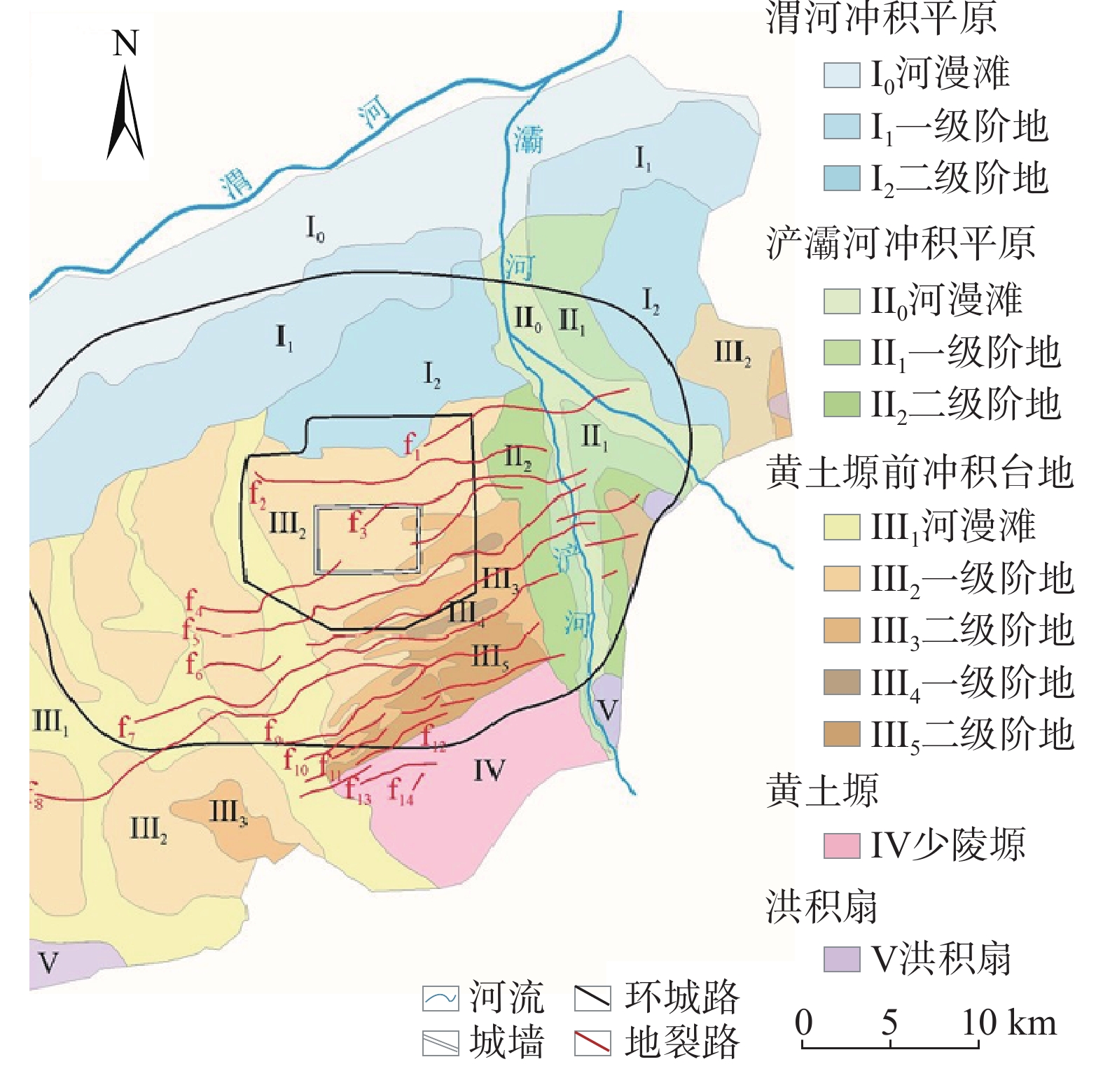
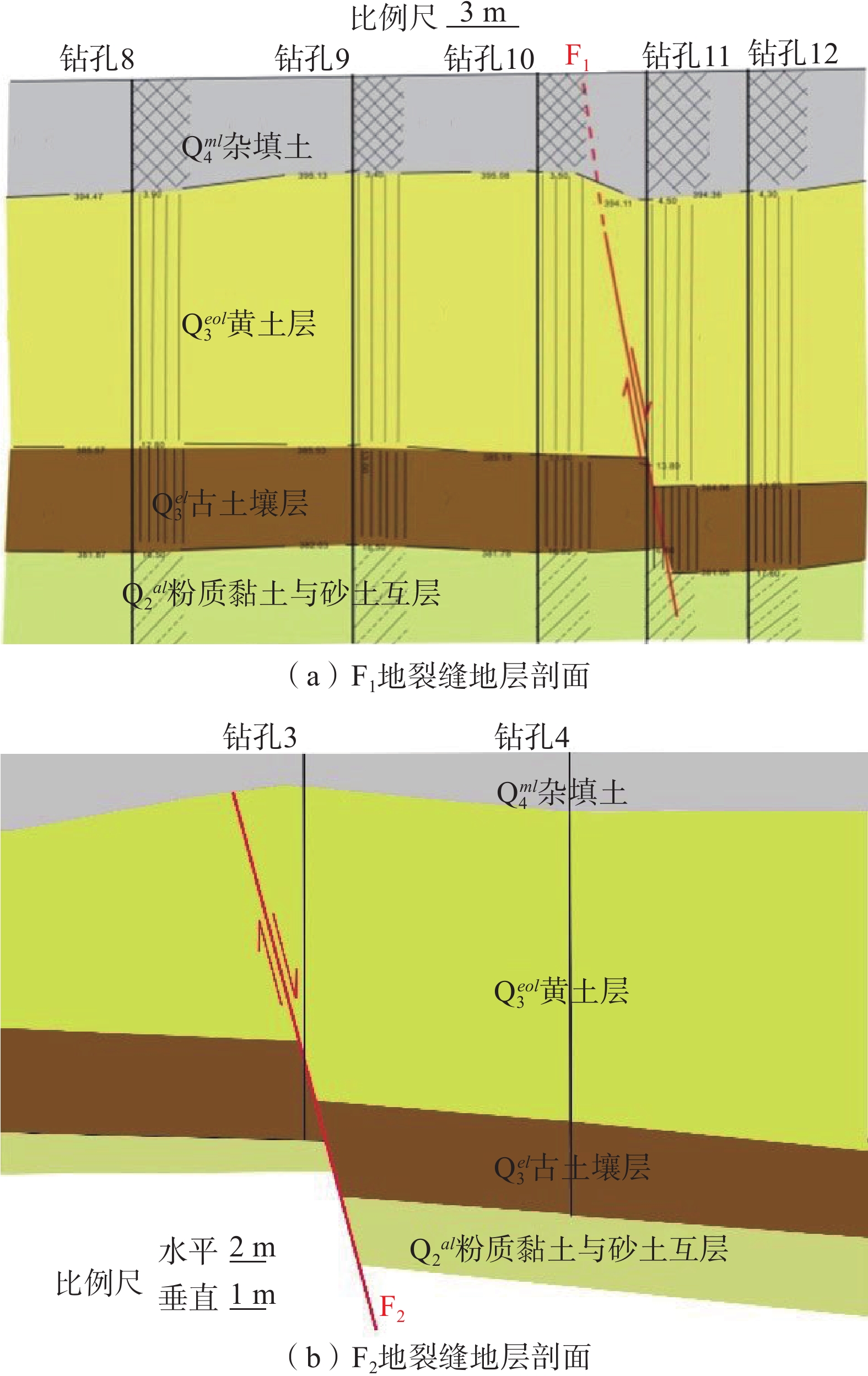
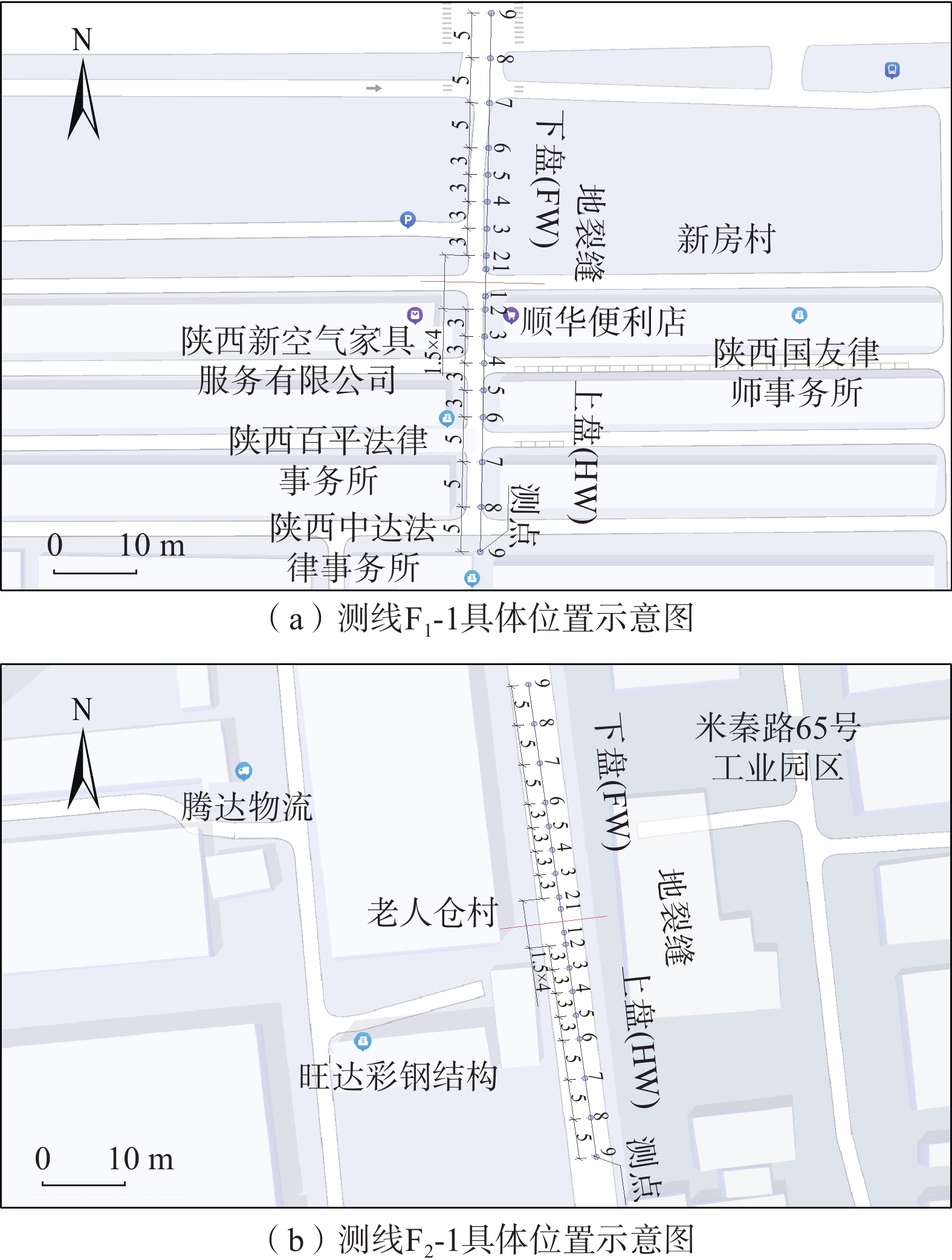
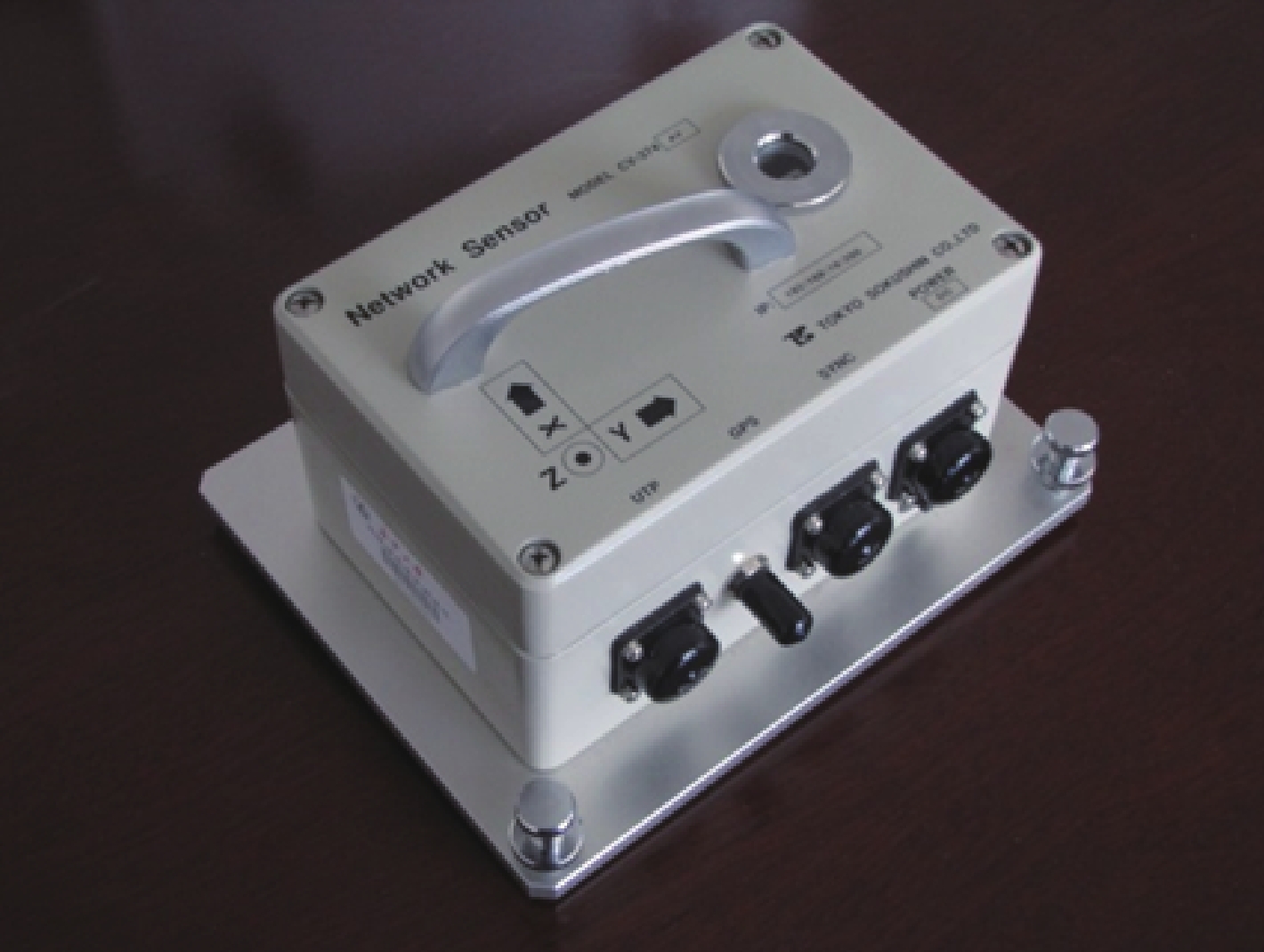
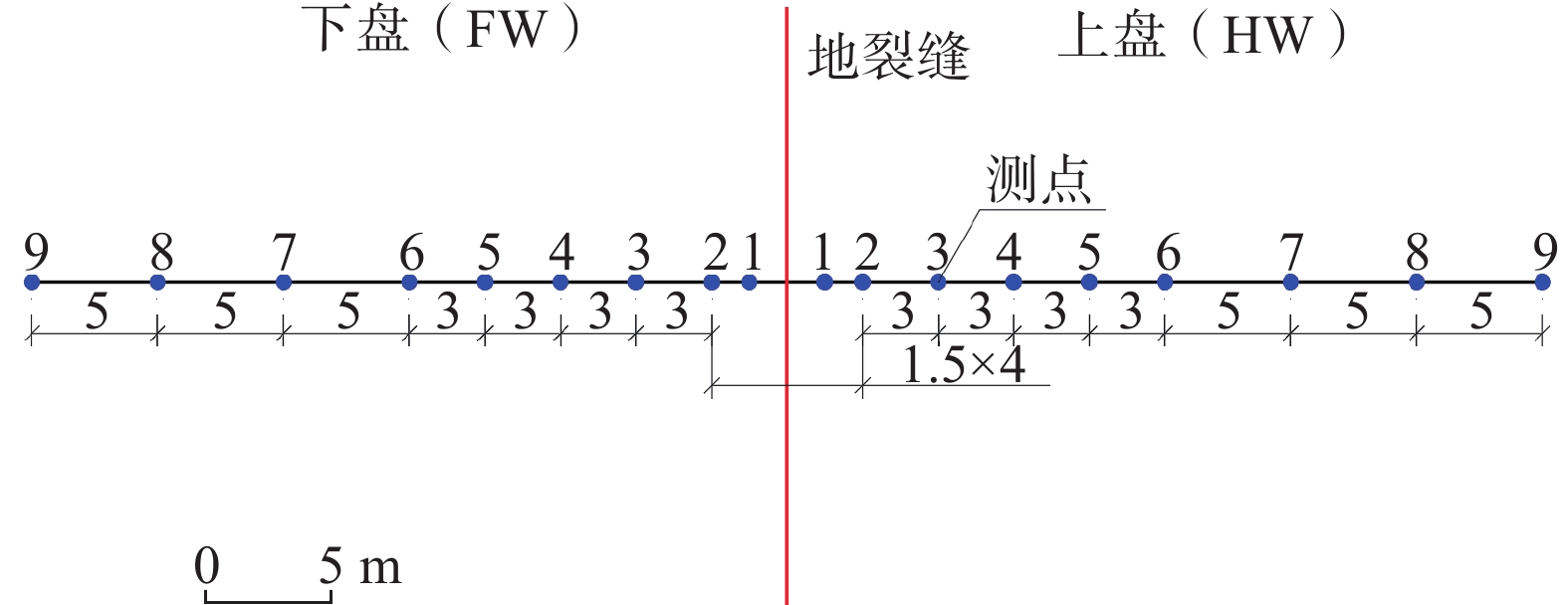

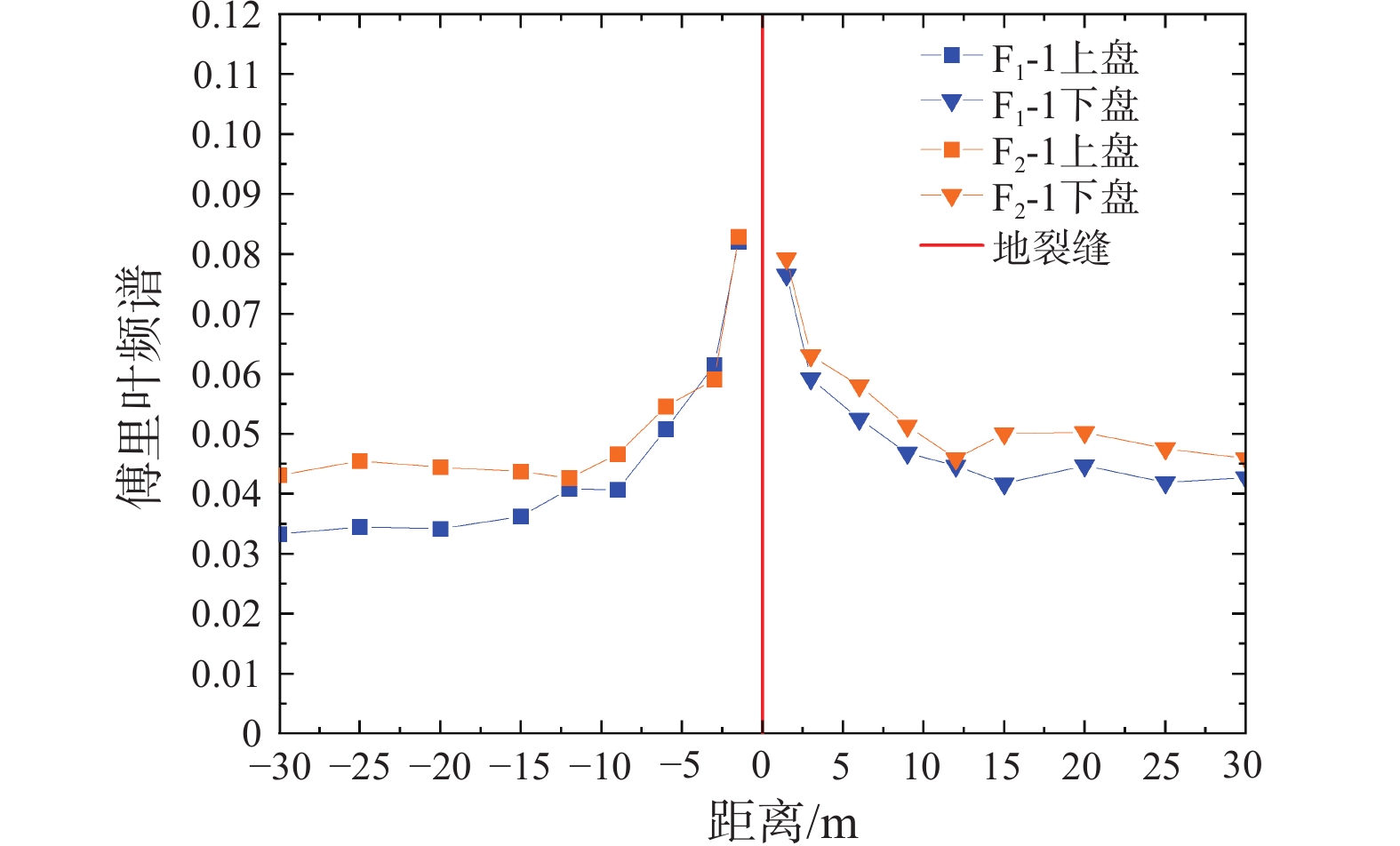

 邮件订阅
邮件订阅 RSS
RSS